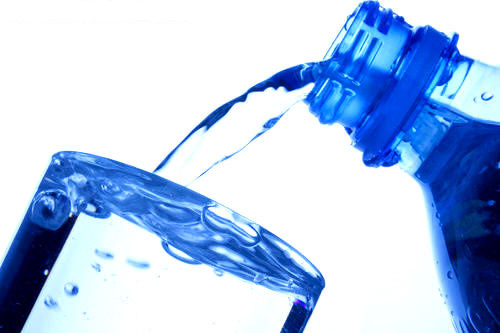Making mineral water at home is easier than you think. There is nothing more refreshing than fizzy water which you’ve made just an hour ago. If you are thinking of making carbonated water yourself, then you’ll be glad to know that you can even create a clone of your favorite mineral water sold in the store.
How to Make Mineral Water

How to Make Mineral Water
Here are the most important things you need to know. If you drink a lot of water, then you better find one or more kegs and use them for your experiment. If you want to try with a smaller quantity, then you can get a SodaStream or iSi, but you’ll quickly think of replacing them if your water turns out to be very good.
Currently, I have three kegs, so I have more than enough space for my carbonated water. Two of them I got from a friend of mine who used to drink heavily and brewed beer at his own home, but he forgot that habit once he joined the AA. The third keg I bought from a local store. Don’t forget to carefully clean and sanitize your keg/s (or other container) before pouring tap water in to them.
If you are going to use kegs for your experiment then make a trip to the local welding supply store and get a tank of CO2. You’ll also need to get some hoses and a requisite gas regulator from the home-brewing supply store. The rest of the materials are pretty common and you probably already have them.
The next step is to find out the minerals which are used in your favorite water. Some companies keep their recipes a secret, but you should be able to find enough information to create a clone of their product. Your tap water’s quality is important too and you must get some information from the local water department. The information will contain a chemical analysis which will tell you the amounts of chloride, sodium and calcium found in the water.
The recipe I used is for Gerolsteiner, a type of German mineral water. The recipe included relatively common ingredients – one dash of regular salt, 2 dashes of Epsom salt which can be bought from any health food store, 1 heaping teaspoon of lime and approximately ½ teaspoon of baking soda. The final ingredient is milk of magnesia which can be bought from a drugstore.
The amount of ingredients you’ll be adding to the water may seem incredibly small, but I assure you that the results be just fine. At first I was worried when I saw how little I had to add to my 19l keg, but the final result surpassed my expectations. Adding the minerals isn’t enough to make the water mineral. At first, it will have a milky color and its taste will be terrible. This is, because you haven’t carbonated it yet. By adding the CO2, the minerals will be dissolved, the water will clarify and you’ll achieve the required texture and flavor. You can control how fizzy the water is – 30 pounds of pressure will make it relatively refreshing, but you can pump it up to 60psi to achieve an even better effect.
The final thing you must know about home-made mineral water is how to store and serve it. As you know, there is a very direct relation between the carbon dioxide in the water and the water temperature. The colder it is, the bubblier and tastier it will be. Keep it cool, but don’t overcool it, because you don’t want frostbite do you? You’ll find that home-made mineral water can be much more refreshing than the top-shelf brands you get from the store.



Hi – I’m just getting ready to start trying to make my own mineral water at home. (I buy 2+ cases a week of Gerolsteiner, and I’ve just got to come up with a more economical means for my consumption!) I also brew beer (it’s a requirement if you live in Portland, Oregon :-) ), so have plenty of kegs. For this process, I’m planning to use 5 gallon corny kegs. If (WHEN!) I get this right, I’ll invest in a full size kegerator and keg beer cooler. Would you be so kind as to share your exact Gerolsteiner recipe for both of the size kegs? I would be so, so grateful. We’re most likely going to be moving to Belize full time in the next couple of years, and for everything I LOVE about Belize, the water is not on that list. So to be able to conquer this recipe prior to that move, would be simply amazing. I know I’ll have to make adjustments based on the make up of the water I use, but I’d love to be able to start with the recipe you’ve already perfected, and work on it from there. (I’ll be going and collecting my water from mountain spring run-off here in Oregon, and will try to source the same type in Belize.
Thanks ever so much for your article, and I really hope you’ll be so kind as to share your recipe with me.
Thanks!
Ll